#Ludwig ii wittelsbach
Explore tagged Tumblr posts
Text
anyone who watched this movie, will be quick to notice they are still in their roles on this photo from premier (I think it was held in the Hofgarten in Munich Residenz)
Otto is looking lost everything is bit too much all the spotlights, Ludwig is happy prince fairytale king with his bird and brilliant childlike smile, and Richard is boyfriend material aka trophy boyfriend. Richard is Kenough.

#ludwig ii#Ludwig ii movie#Ludwig ii 2012#sabin tambrea#tom schilling#prince otto#friedrich mücke#richard hornig#Germany#Bavaria#ludwig ii of bavaria#German cinematography#historical movie#And the parrot!!!#they are so cute#Sabin as ludwig chefs kiss#neuschwanstein castle#hohenschwangau#herrenchiemsee castle#Ludwig ii wittelsbach
28 notes
·
View notes
Text

“Mental disorders were rampant in the house of Wittelsbach due to inbreeding so when I read that Princess Alexandra Amalie suffered from the same thing & had a fixation with cleanliness, I immediately checked her birth date (26 August) and yup, she's a Virgo. I'm not a crazed horoscope reader but I do believe Virgos are more prone to fixation and other issues due to their "typical" traits in general. Then I see that her nephew Ludwig II, who also suffered some major mental issues, was born on 25 August, so another Virgo. Not attacking anyone, I'm a Virgo myself who has the same problem with cleanliness so it's interesting to see similar things happening to others, royals no less in this case.” - Submitted by Anonymous
16 notes
·
View notes
Text
Munich - Propylaea, Glyptohek, Munich Residenz
Propylaea, Konigsplatz, Glyptohek, Munich Residenz, Siegestor were to be the order of the day; walking distance sites from Munich/München historical centre. Konigsplatz was an area I had walked past a few times before fully exploring. Large grey stout buildings purposefully and sparsely dotted around manicured gardens dissected by wide, yet quiet, roads. Without stretching the imagination, this…
#baroque#Dedicated to victory destroyed by war urging peace#Dem Sieg geweiht vom Kreig zerstört zum Freiden mahnend#Duke Albert IV#Glyptohek#King Ludwig I of Bavaria#Konigsplatz#München#Munich#Munich Residenz#Neoclassical#Otto of Greece#Propylaea#Renaissance#Siegestor#Stephen II#Wittelsbach
0 notes
Text

Portrait of Therese of Saxe-Hildburghausen (1792-1854), Wife of Ludwig I of Bavaria (1786-1868)
Artist: Joseph Karl Stieler (German, 1781–1858)
Date: 1826
Medium: Oil on canvas
Collection: Neue Pinakothek, Munich, Germany
Description
Queen Theresa (1792-1854) was a daughter of Frederick, Duke of Saxe-Altenburg, and Duchess Charlotte Georgine of Mecklenburg-Strelitz, eldest daughter of Charles II, Grand Duke of Mecklenburg-Strelitz. As a child she had grown up in the rather modest capital of her father’s small duchy of Saxe-Hildburghausen, and not in his later capital of Altenburg, which he acquired after the Saxon dukes reorganised their states in 1826. In 1809, Theresa had been on the list of possible brides for Napoleon, but following the latter’s marriage to the Archduchess Marie-Louise, she married the Bavarian Crown Prince Ludwig, on 12 October 1810. Their wedding was the occasion of the first ever Oktoberfest, which has been repeated almost every year since.
Her husband succeeded as king in 1825 but his numerous love affairs caused her some pain, which she tolerated while refusing to allow his mistresses to attend her at court. On one occasion, in 1831, she left the capital to make her disapproval clear – nonetheless, despite the difficulties in their marriage she was the mother of nine children, the oldest, Maximilian, succeeding as king when Ludwig was deposed following the 1848 revolution. Therese proved to be a capable royal consort, heading the government during her husband’s frequent foreign trips, and having some considerable political influence. She was particularly popular with the Bavarian public and was considered the embodiment of an idealised image of queen, wife and mother and was involved in a great number of charitable organisations for widows, orphans and the poor. She was the object of great sympathy during her husband’s very public infidelity with the notorious courtesan, Lola Montez, which contributed to the demands for his abdication in 1848.
This painting must be particularly noted for the extraordinary attention to the queen’s silk embroidered robes, her bracelets, necklace and earrings and the splendid tiara placed alongside the royal crown. Her robe is embroidered with gold leaves and flowers and along the bottom edge the blue and silver diamond lozenges of the Wittelsbach arms are sewn into gold edged ovals. An ermine robe hangs from over her shoulder to the ground and in her left hand she holds a gold bejewelled fan. Despite its small scale this superbly executed portrait holds the viewer’s attention in every detail, and is a testament to the artist’s mastery of grand, royal portraiture.
#portrait#painting#queen theresa of Bavaria#full length#oil on canvas#fine art#oil painting#german history
14 notes
·
View notes
Note
Who are all of the children of Maximilian in Bavaria and Ludovika in Bavaria? I only know Sisi
Hello! Sorry it took me so long, I’ve been putting together this answer for a while. This is a somewhat basic introduction to the siblings, since I didn’t want this post to be even longer than already is.
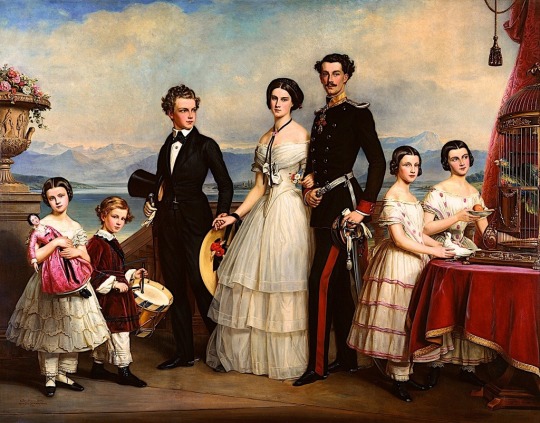
Duke Maximilian and Duchess Ludovika had a total of ten children, five girls and five boys. Their second son, Wilhelm Karl, sadly died at a month and half old, and their fourth son, Maximilian, was stillborn. The surviving eight children were (by order of birth): Ludwig Wilhelm, Helene, Elisabeth, Karl Theodor, Marie, Mathilde, Sophie and Maximilian Emanuel.

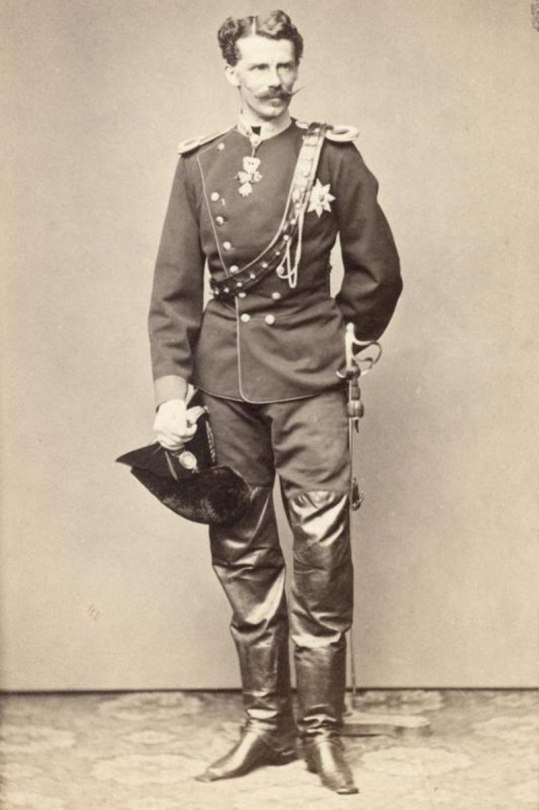
The eldest, Ludwig Wilhelm, born in 1831, was always known as “Louis” in his family. In 1858 he gave up his position as the future head of the Dukes in Bavaria branch in order to marry his mistress, former actress Henriette Mendel. He seems to have been somewhat difficult, at least judging by something Elisabeth told to her lady-in-waiting Countess Mária Festetics: “It is a good thing that Henriette is his wife, for anybody else would long since have left him, and he is happy with her.” What does this exactly mean I have no idea. Louis and Henriette had two children, Marie (born a year before her parents marriage) and Karl, who died as a baby. As was customary for Wittelsbach princes he did a military career, and in 1866 fought in the Seven Weeks War. We don’t really have much more information about him; many accounts about the Duke and his family that come after the Mayerling affair, in which his daughter Marie Larisch played a key role as the go-between Crown Prince Rudolf and Mary Vetsera, are heavily affected by the negative reputation that had befallen over her. His relationship with his sister wasn’t unaffected by this either, and he and Elisabeth became distant, though Elisabeth’s daughter Marie Valerie still wrote affectionately of her “Aunt Henriette”, so it may have been more out of a sense of awkwardness than Louis being directly blamed for the affair. He went to Elisabeth’s funeral, visibly affected by his sister’s death, and was one of the men who took her coffin to the Capuchin Crypt. A year after his wife’s death in 1891 he married actress Antonie Barth, forty years his junior. This marriage ended up in a divorce in 1913, after she had a child whom Louis claimed wasn’t his (I found some gossip articles about this on newspapers but that’s a whole rabbit hole I haven’t gone down yet). Ludwig Wilhelm died in Munich 1920, aged eighty-nine-years-old.
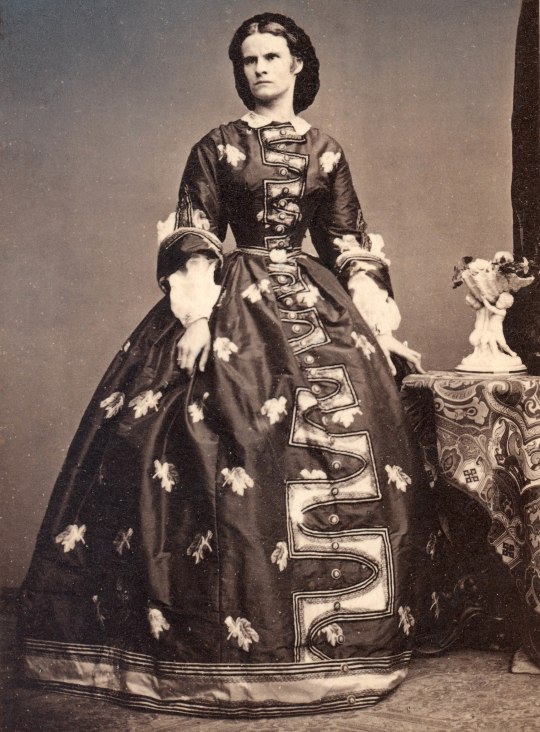

Born in 1834, the third child an eldest daughter, Helene, nicknamed “Nené” and “Lenza”, is probably the most known of Sisi’s siblings, and also the most misrepresented. She has gone down in history for being the disciplined, exemplary daughter that was groomed for years to become empress only to have “her fiancé” stolen by her younger sister. Except that none of this is true. In her old age Ludovika often complained that Helene had been a troublesome child who had caused her a lot of grievances. And it’s unlikely that Helene had ever expected, let alone been prepared, to become empress years in advance: not only there had been serious attempts to get Princess Anna of Prussia’s hand for Franz Josef in 1852 (why would they have done this if Helene was supposedly waiting in the wings to marry him?), but also when Ludovika was told that the emperor wanted to marry Sisi she became very emotional “for in her great modesty she had always doubted that the Emperor would really think in one of her daughters”.
By late 1857 Ludovika lamented that her daughter had pretty much become a spinster. But in the beginning of 1858 Helene met Maximilian, Hereditary Prince of Thurn und Taxis, and soon after he proposed. This marriage wasn’t well received by King Maximilian II, since the Taxis were subjects of the Bavarian king and therefore not equal to marry a Wittelsbach, but eventually King Max gave them the all-clear and they married. Reportedly the marriage was happy, but her husband sadly died only ten years later of an illness, and she fell into a deep grief. When Helene’s father-in-law died in 1871 she became the de facto head of the house of Thurn und Taxis until her son Maximilian reached the majority. Helene was sadly to suffer two more big blows in her life: in 1881 her daughter Elisabeth died of childbirth complications aged only 20-years-old, and in 1885 her son Maximilian died of cardiac problems aged only 24-years-old. Helene’s last years are said to have been very sad, since she never recovered from the untimely deaths of her husband and children. She died in 1890 at the age of 56, likely of cancer. At her deathbed were her two surviving children, Louise and Albert, and her sister Elisabeth.

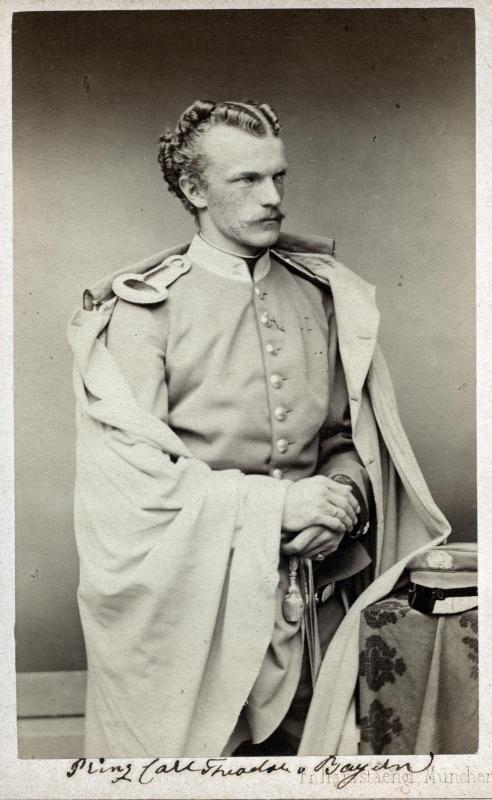
The fifth child and third son, Karl Theodor, called “Gackl” by his family, was Elisabeth’s favorite brother. He seems to have been a very charismatic man, since everyone that met him had nothing but good things to say about him. In 1865 he married his first cousin Princess Sophie of Saxony, and they had one daughter, Amalie. Sadly Sophie’s health was severely affected by childbirth, and died over a year later of influenza. Like his elder brother he also did a military career starting from a young age, and fougth in the Seven Weeks War. However, afterwards he left active service and went to the Ludwig Maximilian University of Munich, where he studied medicine. His studies were interrupted by the Franco-Prussian War, but he got his degree as a doctor in medicine, later specializing in ophtalmology. During this time Karl Theodor had remained a widower, but in 1874, seven years after his wife’s passing, he married Infanta Maria José of Portugal, daughter of the deposed King Miguel I of Portugal and seventeen years his junior. They had five children: Sophie, Elisabeth, Marie Gabrielle, Ludwig Wilhelm and Franz Josef. Gackl became a renowned oculist, and in 1895 he opened the Augenklinik Herzog Carl Theodor (Duke Carl Theodor Eye Clinic) in Munich, which exists to this day. He personally operated thousands of people, assisted by Maria José, and later also by his daughters. Karl Theodor died in 1909, a few weeks after his 70th birthday, from bronchitis.
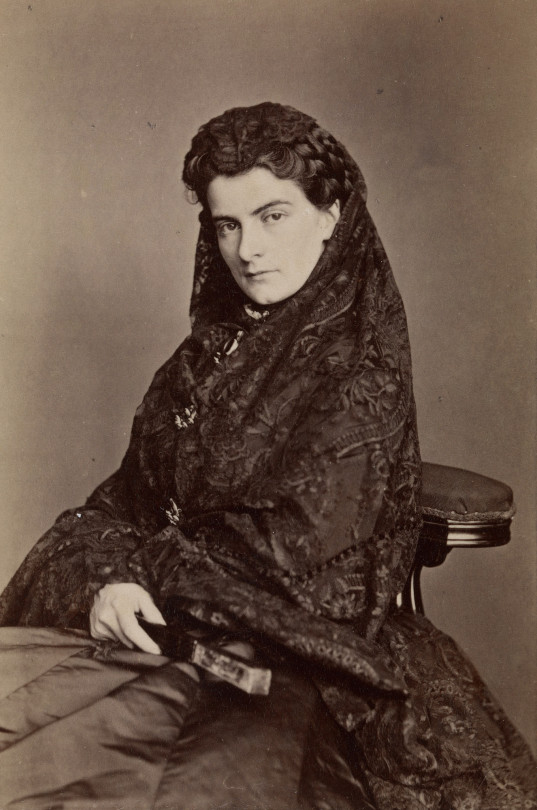
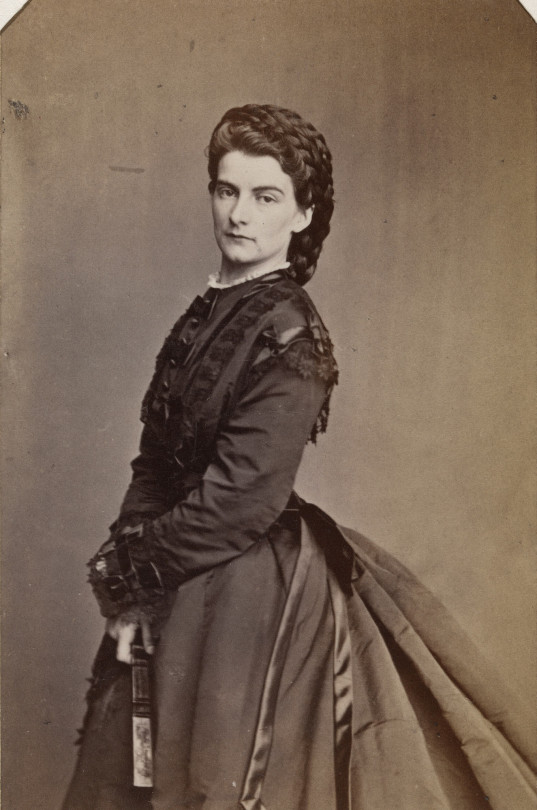
While Helene is the most known of Elisabeth’s sister solely because everyone and their moms know the (incorrect) story of her being “rejected” by FJ, the sixth child and third daughter, Marie, is the most famous sister for her own merits. She was the last Queen of the Two Sicilies as the wife of King Francesco II, and has gone down in history for leading the resistance during the Siege of Gaeta, the last stand of the Bourbon dynasty in Naples. She was only nineteen when her husband finally surrounded, and lived in exile for the rest of her life. After ten years of marriage Marie and her husband had one child, Maria Cristina, who sadly passed away while still a baby. They tried to have more children, but all her pregnancies ended up in miscarriages. She spent the rest of her life traveling; when WWI broke she settled down in Munich, where she died aged 82 in 1925.
Marie has gotten an interesting reputation: she is either known for being the brave queen who stood up next to her troops until the end, or for being a haughty woman who deeply envied her imperial sister and lived full of resentment. The first is just one, although crucial, brief moment in her life; and the second is literally just what Mária Festetics, one of Elisabeth’s ladies-in-waiting, thought of her. Once I realized how little we actually knew about Marie, how much is just hearsay and speculation, she became fascinating to me, but sadly we still don’t have a good biography about her that uses primary sources instead of relying in gossipy second hand accounts.
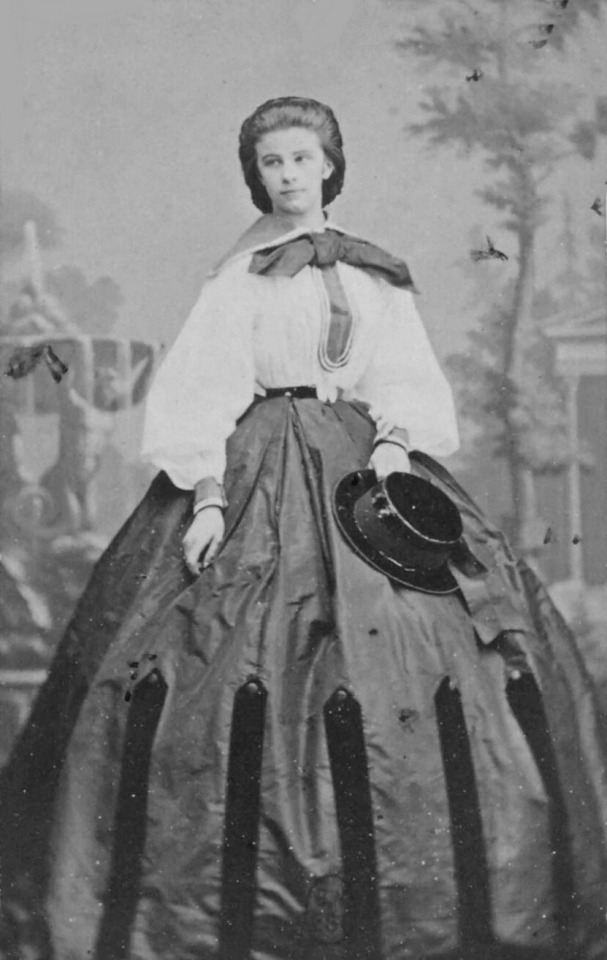

Mathilde, called “Spatz” (Sparrow), is the sister we have the least information of. She and Marie were the closest of the sisters; they were always together, and would often even dress the same (as you can see in the Stieler portrait). In 1861 Mathilde married Prince Luigi, Count of Trani, half-brother of Marie’s husband, and joined her sister in Rome, were the Bourbons in exile had settled their court. The marriage turned out to be unhappy, since her husband was an alcoholic and cheated on her, though they did had one child: Maria Teresa, called “Mädi”, born in 1867. Mathilde and Luigi separated eventually, though she did went to his aid and nurse him when he was sick. But the person she dedicated her life was her daughter, who for many years suffered from poor health (likely sclerosis); Mathilde took care of Mädi until her death, aged only 42. She spent the last years of her life with her sister Marie, and died only months after her, in 1925.
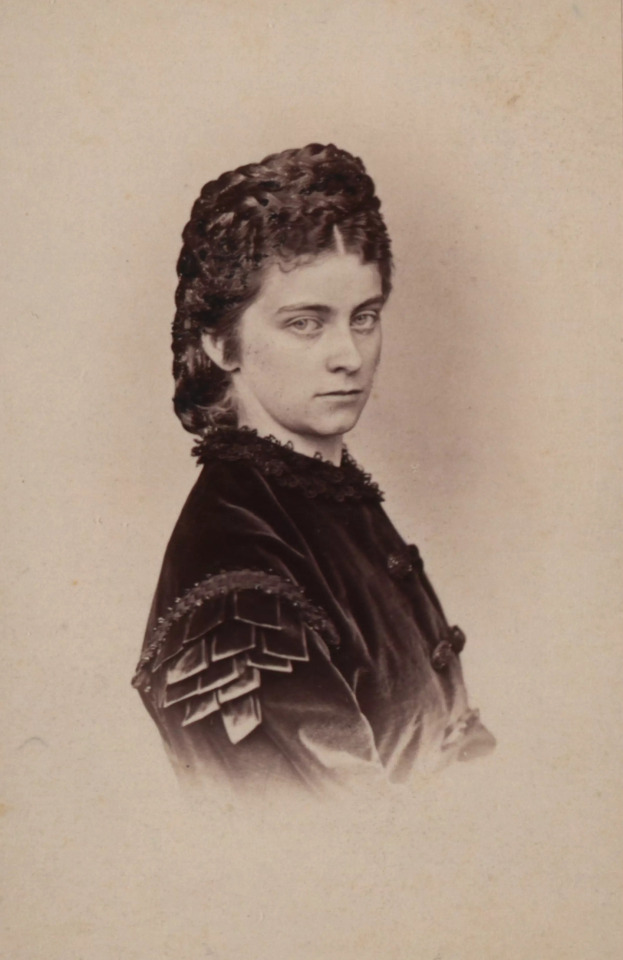
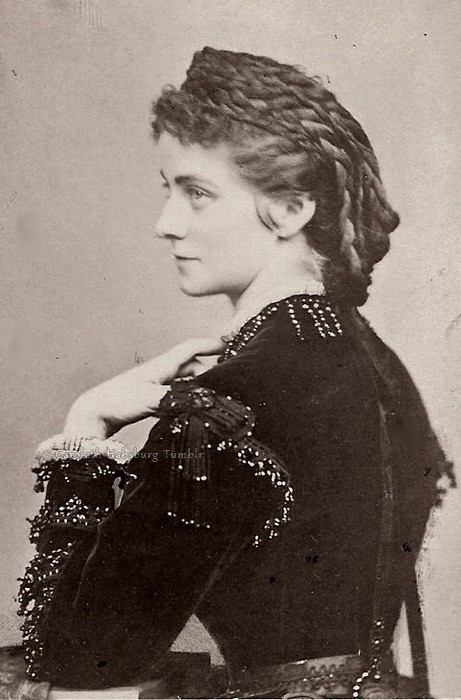
The youngest daughter, Sophie, born in 1847, is probably the most “romantic” of the Wittelsbach sisters. Just like Helene she has gone down in history for being a “rejected bride”, though in her case, it’s actually true. She was briefly engaged to her cousin Ludwig II of Bavaria, and it was an absolute disaster: he had no interest in marriage (not really that surprising when you consider that he was gay) and often publicly snubbed Sophie; she in turn was absolutely miserable because she felt he was playing with her. Ludwig kept postponing the wedding until Sophie’s father, Duke Max, send him an ultimatum, to which the king responded by just canceling it. As if these months hadn’t been stressful enough for Sophie, during this time she also had an affair with Edgar Hanfstaengl, the son of the court photographer. I don’t really know much about this liaison, only that she was aided by two ladies-in-waiting in order to meet him in private and that some love letters she wrote to him have survived. But whatever the extent of her feelings, the relationship could never become serious, and one year later she married Prince Ferdinand of Orléans, Duke of Alençon, a grandson of King Louis Philippe I of the French. I don’t know if this marriage was ever a love match or if Sophie simply wanted to settle down for good after all her failed romantic experiences; whatever the case they did have two children, Louise and Emmanuel. The Orléans had been living in exile in England since the deposition of Louis Philippe, and only after the fall of the Second French Empire in 1872 were they allowed to return to France. This probably improved Sophie’s mood, since she had suffered from depression since her children’s birth, and the English weather didn’t make her feel better.
After the death of her former fiancé Ludwig II in 1886, Sophie fell ill and on advice of her brother Gackl she searched for a treatment in Munich under a Dr Glaser. But while he treated her she fell in love with her doctor, who was also married with children. This time Sophie didn’t want to give up her enamored, and did something unthinkable for a woman of her status in the 19th century: she sought for a divorce from Ferdinand. Sadly things didn’t work out for her, because her husband, on the advice of her brother Karl Theodor, retaliated by having Sophie interned in a mental clinic for “moral insanity”, where she suffered the appalling “treatments” for mental illnesses of the time. After seven months she was considered cured, and allowed to leave the institution. She never again tried to divorce.
Sophie dedicated the last years of her life to charity work. In 1897 she was one of the organizers of the Bazar de la Charité, an annual charity event held in Paris since 1885, and was in the place when an accident set it on fire, taking the lives of 126 victims. She was one of the victims of the fire, and although she had the chance to leave she refused she refused to abandon the Bazar until everyone else was out, guiding and helping people to find the exist until her last moments. She had been fifty-years-old.


Lastly the youngest child Maximilian Emanuel, nicknamed “Mapperl”, is the brother we know the least about. Born in 1849, he was only two years and a half younger than his sister Sophie, whom he was the closest to: they were often referred as “die Kleinen” (the little ones). As his eldest brothers he did a military career, and fought both in the Seven Weeks War (aged only sixteen!) and in the Franco-Prussian War. At Sophie’s wedding he met and fell for a cousin of the groom, Princess Amalie of Saxe-Coburg and Gotha, which would have been great… if she hadn’t been already engaged to Prince Leopold of Bavaria. Here’s when things get a bit messy: according Briggitte Hamann, Elisabeth found out about the situation and decided to step in and free Mapperl’s beloved… by introducing her daughter Gisela to Leopold. Which is. Hmmm. A questionable thing to do. However, other authors claim that Elisabeth actually had nothing to do with that, specially considering that Mapperl’s wedding took place three years after Leopold and Gisela got engaged - if the goal was to make Amalie available, he definitely took his sweet time to make his move. One day I’ll look deep into it because I’m genuinely curious as to which is the truth; whatever the case, both couples had happy marriages, so good for them. Max Emanuel and Amalie had three sons: Siegfried, Christoph and Luitpold. Sadly Max Emanuel died quite unexpectedly in 1893 from an ulcer, aged only 43-years-old.
Again, this is only an introduction to the siblings, there’s far more information out there that I could possibly put in a single post. Thank you for your question! The Dukes and Duchesses in Bavaria are really interesting an I think they deserve the spotlight as much as their imperial sister.
#a lot of this i wrote from memory + copying my own previous posts + checking dates and names on wikipedia#so please forgive my lack of sources and sorry if there are mistakes!#house of wittelsbach#duke ludwig wilhelm in bavaria#helene in bavaria hereditary princess of thurn und taxis#karl theodor duke in bavaria#queen marie sophie of the two sicilies#mathilde in bavaria countess of trani#sophie in bavaria duchesse d'aleçon#duke maximilian emanuel in bavaria#asks
31 notes
·
View notes
Text
Every now and again, I think of how Kathryn Warner wrote about Blanche and Philippa of England in her book about pre-WOTR Lancaster and York and get mad.
The king’s elder daughter Blanche of Lancaster had already married, in July 1402 when she was only 10 years old. She wed the elector Palatine of the Rhine, Ludwig von Wittelsbach, and died childless in 1409 at the age of 17. Her younger sister Philippa married Erik of Pomerania, King of Sweden, Denmark and Norway, and a first cousin of the late Anne of Bohemia, Richard II’s queen. Philippa and Erik had no surviving children, and although Henry IV had six legitimate children he had only one legitimate grandchild, Henry V’s son Henry VI. (His sons also fathered several of the illegitimate kind.)
a) Blanche did not die childless. Rupert the English existed.
b) surely there is more to say about Blanche than "she died childless"? You couldn't even mention her famous crown?
c) Ludwig became Elector Palatine the year after she died, not before he married her.
d) what a terrible summation of Philippa's life. She married! She died! She had no surviving children! What, not even "she was the first recorded European princess to wear white at her wedding"? Not even "she died following a stillbirth"?
e) SHE DEFENDED COPENHAGEN AGAINST THE HANSEATIC LEAGUE WHILE HER HUSBAND STAYED IN AN ABBEY PRAYING.
f) I'm so glad we know how exactly Erik of Pomerania was related to Anne of Bohemia and got a reminder of who Anne was. I'd completely forgotten who Anne was despite the fact she's been mentioned in the previous chapters fairly often and the helpful "who's who" guide provided. That's incredibly important information to know. I'm so glad we spent presumably limited word count on that detail and not talking about Blanche and Philippa as individuals.
(n.b. obviously this is interesting and I'm not mad to know this but I am mad that this is considered important enough information to include but nothing about the girls' lives or actions. This, after all, was a book about the Houses of Lancaster and York, not "Anne of Bohemia's family tree". And really, if you wanted to drag Anne in, you could at least mention how Ludwig's father deposed Anne's brother? Give us a sense of the context Blanche married into? I just.. the obvious minimal fucks given here.)
#blanche of england#philippa of england#rupert the english#blog#rants#also despite the level of attention given to anne in the book#it does very much feel like “childless women don't deserve my attention” here
14 notes
·
View notes
Text
ludwig ii was like transrace but transdynasty. subliminal for bourbon insanity instead of wittelsbach insanity
2 notes
·
View notes
Text
The Palace of the nymphs

Nymphenburg Palace (Schloß Nymphenburg in German) was commissioned by the Bavarian Elector Ferdinand Maria von Wittelsbach and his wife, Enrichetta Adelaide of Savoy, in 1664 to commemorate the birth of their son Maximilian II Emanuel.
The architect in charge of the project, the Italian Agostino Barelli, is considered to have introduced the Italian Baroque to Bavaria. Before taking charge of the Nymphenburg, he built the Theatine Church in Munich, begun in 1663. The central pavilion of the palace was completed in 1665. His involvement in both projects ended in 1674, when he returned to Bologna, where he is known to have been baptised in 1627.
Prince Maximilian II Emanuel ordered the extension of the palace from 1701, with two wings to the north and south of the pavilion designed by Barelli. The south wing was later enlarged again to make room for the stables, where today there is a carriage museum. An orange plantation was added to the north wing.
However, of the monumental ensemble represented by the building and its halls and rooms, which gradually incorporated decorative elements in rococo and neoclassical styles, the surrounding gardens, which cover an area of some 800,000 m2, are particularly noteworthy.
The Nymphenburg Park was originally designed in the Italianate style, but was redesigned in the French style by Dominique Girard in the first quarter of the 18th century, and in the 19th century it was redesigned again in the English style by Friedrich Ludwig von Sckell. This is not to be confused with the Englischer Garten (English Gardens), a public park in the middle of Munich.
Over the course of two centuries of alterations, various buildings were erected within the park. First, in the 18th century. The Pagodenburg houses two pavilions with Dutch-tiled decorations on the first floor and Chinese-style on the second; the Baroque Badenburg has a banqueting hall and a bath with a swimming pool; the Magdalenenklause is a faux ruin that was used as a place of meditation; and the Amalienburg is a rococo hunting lodge. The Monopteros, a circular temple in neoclassical style, was built as early as the 19th century.
Today, to the north of the park, you can visit the Munich Botanical Garden, which was created in 1914. The first botanical garden (Alter Botanischer Garten in German) in the Bavarian capital opened its doors in 1809 near Karlsplatz, in the historic centre of the city.
4 notes
·
View notes
Note
HAPPY BIRTHDAY, VIRGO QUEEN !!!!!!!!!!!!
WELL I DON'T KNOW ABOUT THAT....... but i do share a birthday with ludwig II von wittelsbach 👀
3 notes
·
View notes
Text
Me, unsure if I enjoy Vampyria:
Vampyria casually having two pages of a menu that are so pretty
Me, already making two OCs, buying an exclusive pretty Edition: I have no choice now but like you.
But tbh its really really fun at times! The protagonist is just constantly "oh fuck oh shit" and a totally insufferable pos, I cant wait to see her fuck shit up.
Just love the lore so much and I really want to see what is up in Germany and Prussia... what are my beloved Wittelsbacher up to, Ludwig II would love this... build his hundreth castle, totally be a vampire.
Edit after finishing every book: this sucks. They suck. Do not read them, I was so angry all the time.
10 notes
·
View notes
Text

Oberammergau - Schloss Linderhof - Venus Grotto - 1878
1845: Richard Wagners Oper “Tannhäuser und der Sängerkrieg auf Wartburg” wurde zwischen 1842 und 1845 geschrieben: Tannhäuser war ein mittelalterlicher Minnesänger.
1864: Ludwig von Wittelsbach wurde König von Bayern wahrend Wilhelm I ist König von Preußen und Bismark Ministerpräsident.
1866: Nach der Niederlage Bayerns im Deutschen Krieg zwischen dem Königreich Preußen und dem Kaisertum Österreich musste Ludwig ein Bündnis mit Preußen eingehen. Preußen, unter der Führung von Generalfeldmarschall Helmuth von Moltke, besiegte die österreichische Armee. Italien, das an der Seite Preußens gekämpft hatte, erhielt Venetien von Österreich.
1867: König Ludwig II. von Bayern war nie offiziell verheiratet, aber er war 1867 kurzzeitig verlobt. Seine Verlobte war seine Cousine, Herzogin Sophie Charlotte in Bayern, die jüngere Schwester von Kaiserin Elisabeth von Österreich (“Sisi”). Ludwig war cousin von Sisi.
1869–1886: Schloss Neuschwanstein. Neomedievalismus. Inspiriert von Wagners Opern. Das Rheingold Wagner ist von 1869. Wagner entwickelte die Idee des “unendlichen Melos”, also eines kontinuierlichen musikalischen Flusses ohne Unterbrechung durch traditionelle Formen wie Arien. Er setzte Leitmotive (wiederkehrende musikalische Themen) ein, um Charaktere, Gefühle oder Ideen zu repräsentieren. Richard Wagners Leitmotive sind eines der zentralen Elemente seines Musikdramas. Ein Leitmotiv ist ein wiederkehrendes musikalisches Thema, das eine Person, einen Gegenstand, eine Idee oder ein Gefühl repräsentiert. Wagner verwendete diese Technik besonders intensiv in seinem Opernzyklus Der Ring des Nibelungen.
1870: Wilhelm II König und spater Kaiser nach Sedan.
1871: entschied Wagner, Bayreuth als Standort für sein neues Opernhaus zu wählen, insbesondere wegen der ruhigen Atmosphäre und der Unterstützung der Stadt. Mit finanzieller Hilfe von König Ludwig II. von Bayern begann der Bau des Bayreuther Festspielhauses 1872.
1874–1878: Schloss Linderhof. Ein kleineres Schloss im französischen Rokokostil, inspiriert König Louis XIV.
1885: Tristan und Isotta. Due ouverture ist ein beispiele von “unendliche Melo”.
1886: Tod Ludwigs (“Märchenkönig). Puccini nutzte Leitmotive in seinen Opern, jedoch weniger systematisch und weniger philosophisch aufgeladen als Wagner. Beispiele: In Tosca gibt es Motive für Liebe, Gewalt und Verrat. Während Wagner die traditionelle italienische Melodie zugunsten des unendlichen Melos aufgab, blieb Puccini der italienischen Tradition des melodischen Ausdrucks treu.
0 notes
Text

CINE Luis II de Baviera (1973) Título original: Ludwig II Italia Dirección: Luchino Visconti 1)Idioma: Italiano con Subtítulos en Español 2)Idioma: Doblada al Español
Atención: Solo para ver en PC o Notebook Para ver el Film pulsa el Link: https://x.com/JulioPison/status/1847713661692891302
Reparto: Helmut Berger, Romy Schneider, Trevor Howard, Silvana Mangano, Gert Fröbe, Marc Porel, Helmut Griem
Género: Drama | Biográfico. Siglo XIX. Histórico
Sinopsis: En 1864, antes de cumplir los veinte años, Ludwig de Wittelsbach (Luis II, "el rey loco") ocupó el trono de Baviera. El joven rey era generoso y romántico y soñaba con traer la felicidad a su pueblo. Fue un gran mecenas que amaba el arte, la paz y la armonía universal. Sin embargo, por confiar en sus consejeros, llevó a Baviera a una desastrosa guerra que la dejaría en manos de Bismarck. Hasta sus más fieles colaboradores conspiraban contra él; lo traicionó incluso su principal protegido, Richard Wagner. Únicamente su prima Elizabeth ("Sissi"), la esposa del Emperador de Austria, que sentía por él un afecto casi maternal, le fue incondicionalmente fiel
Críticas: Retrato minucioso de la psicología del rey y de su progresiva decadencia, es una película desmesurada (cuatro horas), elegantísima, rodada con una belleza y una sensación de realidad que, a diferencia de casi cualquier folletón histórico, uno puede sentir que se está asomando realmente a la corte bávara y no a una recreación moderna de bigotes postizos, trajes de guardarropía y pelucones de ópera. -Rolando Sívori- La Razón del Mediterráneo
Posición en rankings FA: 47 Mejores biopics / films biográficos 61 Mejores películas italianas de todos los tiempos 87 Mejores películas de los años 70
Premios: 46 Edición de los Oscar (1974) - Películas de 1973 nom. Mejor vestuario (Piero Tosi) 18ª Semana Internacional de Cine de Valladolid - Seminci 1973 ganadora. Mejor Película - Espiga de Oro Premios David di Donatello 1973 ganadora. Mejor película ganadora. Mejor director (Luchino Visconti) ganadora. Premio Especial (Helmut Berger)
Café Mientras Tanto jcp
1 note
·
View note
Text

‹Sisi› - Elisabeth von Österreich-Ungarn
Kurze Einführung in ihre Biografie
Am 10. September 1898 verlässt Kaiserin Elisabeth von Österreich zur Mittagszeit ein Genfer Hotel, um über den See nach Montreux zu fahren. Ihre Hofdame, die Gräfin Sztáray, gibt später zu Protokoll: “Beim Hotel ‘De la Paix’ kam ein Mann auf uns zu. Unmittelbar vor uns schien er plötzlich zu straucheln; er machte eine Bewegung mit der Hand. Ich glaubte, um sich beim Stolpern aufrecht zu halten. Die Kaiserin sank zu Boden. ‘Es ist mir nichts geschehen’, antwortete sie ruhig. Wir erreichten die Anlegestelle. Plötzlich sagte sie mit erstickender Stimme: ‘Jetzt, Ihren Arm, schnell, bitte!’” Kaiserin Elisabeth stirbt noch auf dem Fährboot. Ein kaum bemerkter Stich mit einer spitzen Tischlerfeile hat sie mitten ins Herz getroffen. Der italienische Anarchist Luigi Lucheni verhehlt seine Befriedigung nicht, ein so prominentes Mitglied der verhassten Aristokratie ermordet zu haben. Elf Jahre nach seiner Verurteilung zu lebenslänglichem Kerker erhängt sich Lucheni in seiner Zelle. Die 60-jährige, von Depressionen geplagte Kaiserin hat mehrmals Todesahnungen geäußert, aber Polizeischutz für ihre Reisen abgelehnt. Zu ihrem Schwager, dem Herzog von Alecon, sagte sie, kurz vor dem Attentat: “Wir werden eines gewaltsamen Todes sterben…”
Elisabeth ist die Tochter des bayerischen Herzogs Maximilian von Wittelsbach und seiner Frau Ludovika. 1853, mit 15 Jahren, wird Sisi, wie man sie allgemein nennt, überraschend zur Gattin des österreichischen Kaisers Franz Joseph auserkoren. Der junge Monarch hat sich Hals über Kopf in die kleine Schwester der ihm zugedachten Helene verliebt. Sisi, später oft als eine der schönsten Frauen ihrer Zeit tituliert, ist fröhlich, witzig und ungestüm. Ihre Jugend hat sie fast ausschließlich auf dem Landsitz in Possenhofen verbracht. Ihr Vater, der nichts von aristokratischer Erziehung hält, hat einmal zu ihr gesagt: “Wenn du und ich nicht Fürsten wären, wären wir zweifellos Reiter in einem Wanderzirkus!” Es ist daher nicht verwunderlich, dass sich die junge Kaiserin nur schwer mit dem Wiener Hofzeremoniell und der strengen Schwiegermutter Sophie zurechtfinden kann. Sisi bringt vier Kinder zur Welt: die Prinzessinnen Sophie und Gisela, Thronfolger Rudolf und Marie Valerie. Sobald diese dem Kindesalter entwachsen sind, nutzt sie jede Gelegenheit, um ihren repräsentativen Pflichten zu entgehen. Franz Joseph toleriert die Lebensweise seiner Frau, die ihre Zeit am liebsten mit Kuraufenthalten und ausgedehnten Reisen verbringt. Elisabeth, die auch gerne Gedichte schreibt, verfällt immer mehr in tiefe Melancholie, die sie ihrem Cousin, dem unglücklichen Ludwig II. von Bayern, seelenverwandt macht. Nach dem Selbstmord ihres Sohnes Rudolf zieht sich die beim Volk beliebte Kaiserin gänzlich vom Hofleben zurück. In den Zeitungen kursieren immer häufiger Meldungen über eine fortschreitende Geisteskrankheit Elisabeths. Sie zeigt aber auch Besonnenheit und Toleranz, nicht zuletzt dadurch, dass sie ihrem vernachlässigten Gatten Franz Joseph den Umgang mit der Burgschauspielerin Katharina Schratt empfiehlt. Sie selbst lässt sich auf der Insel Korfu einen eigenen Palast, das Achilleion, errichten. Viel Zeit verbringt die Kaiserin auch auf Schloss Gödöllö in Ungarn. Ihre Vorliebe für die Magyaren und ihr Nahverhältnis zum Revolutionär Andrássy haben jahrelang immer neuen Gerüchten Nahrung gegeben. Die große Leidenschaft von Elisabeth ist aber zeitlebens das Reisen. Sie führt die Kaiserin im Herbst 1898 nach Genf, wo sie der Tod ereilt.
Quelle: Siehe Link im Titel
0 notes
Text
Kloster Fürstenfeld

Kloster Fürstenfeld · Architektur Gründung Gastronomie
Das Kloster Fürstenfeld in Fürstenfeldbruck hat eine lange und bewegte Geschichte, die bis ins 13. Jahrhundert zurückreicht. Gründung und frühe Geschichte: Das Kloster wurde 1263 von Herzog Ludwig II. von Bayern, auch bekannt als Ludwig der Strenge, gegründet. Die Gründung erfolgte als Sühneleistung, nachdem der Herzog seine erste Frau Maria von Brabant wegen des Verdachts der Untreue hatte hinrichten lassen. 1266 erhielt das Kloster seine offizielle Stiftungsurkunde, in der der Herzog es großzügig mit Ländereien und Privilegien ausstattete. Es wurde mit Zisterziensermönchen aus dem Kloster Aldersbach besiedelt. Bestimmung als Grablege: In seinem Testament bestimmte Ludwig der Strenge das von ihm gestiftete Kloster Fürstenfeld als seinen Begräbnisort. Nach seinem Tod 1294 wurde er tatsächlich in der Klosterkirche beigesetzt, auch wenn der genaue Ort seines Grabes heute aufgrund späterer Umbauten nicht mehr bekannt ist. Entwicklung im Mittelalter und der frühen Neuzeit: In den folgenden Jahrhunderten entwickelte sich Fürstenfeld zu einem bedeutenden geistlichen und wirtschaftlichen Zentrum. Es genoss die Gunst der Wittelsbacher Herrscher, insbesondere Kaiser Ludwigs des Bayern im 14. Jahrhundert. Der Dreißigjährige Krieg im 17. Jahrhundert brachte schwere Zeiten für das Kloster. Es wurde mehrfach geplündert und gebrandschatzt. Nach Kriegsende gelang es Abt Martin Dallmayr, das Kloster wieder aufzubauen und zu einer Stätte der Frömmigkeit und Wissenschaft zu machen. Barocke Blütezeit: Um 1700 begann unter Abt Balduin Helm der prachtvolle barocke Umbau der Klosteranlage. Die heutige imposante Barockkirche wurde in dieser Zeit errichtet. Kurfürst Max Emanuel wünschte sich in Fürstenfeld einen »bayerischen Escorial«. Säkularisation und Nachklosterzeit: 1803 wurde das Kloster im Zuge der Säkularisation aufgelöst. Die Gebäude gingen in staatlichen Besitz über und wurden in der Folgezeit unterschiedlich genutzt, unter anderem als Polizeischule und Landesschülerheim. Heutige Nutzung: Heute beherbergt die ehemalige Klosteranlage ein Veranstaltungsforum und ein Museum. Das Museum Fürstenfeldbruck widmet der Geschichte des Klosters einen eigenen Ausstellungsbereich. Das Kloster Fürstenfeld blickt auf eine fast 800-jährige Geschichte zurück, die von geistlichem Leben, künstlerischer Pracht und wechselnden Nutzungen geprägt ist. Sehenswürdigkeiten: Die barocke Klosterkirche ist zweifellos das Herzstück der Anlage. Sie wurde Anfang des 18. Jahrhunderts erbaut und gilt als Meisterwerk der bayerischen Barockarchitektur. Besonders beeindruckend sind: · Die prachtvolle Fassade · Die kunstvollen Deckengemälde und Stuckarbeiten im Inneren · Die Werke der berühmten Asam-Brüder Klostergebäude und Gartenanlage: Die weitläufige barocke Klosteranlage lädt zu Spaziergängen ein. Besonders sehenswert sind: · Der malerische Klosterhof · Die restaurierten Konventgebäude · Die gepflegte Gartenanlage Museum Fürstenfeldbruck: Im ehemaligen Brauereigebäude des Klosters befindet sich heute das Museum, das einen Schwerpunkt auf die Klostergeschichte legt. · Figuren vom Stiftergrabmal der Wittelsbacher · Skulpturen und Tafelbilder des spätgotischen Hochaltars der Klosterkirche · Moderne Medieninstallationen zur Klostergeschichte Kulturelle Einrichtungen: Das Klosterareal beherbergt zudem: · Das Veranstaltungsforum Fürstenfeld mit Konzerten und Theateraufführungen · Ein Kunsthaus mit wechselnden Ausstellungen Gastronomie: Für das leibliche Wohl sorgen: Zwei Restaurants mit Biergärten, die bayerische Schmankerl und gehobene Küche anbieten Die Kombination aus beeindruckender Architektur, kulturellen Angeboten und der idyllischen Lage machen das Kloster Fürstenfeld zu einem beliebten Ausflugsziel, das Geschichte, Kunst und Genuss vereint. Kloster Fürstenfeld · Architektur Barock Gründung Garten Museum Gastronomie Ort Read the full article
0 notes
Text

Queen Theresa of Bavaria
Artist: Friedrich Dürck (Saxon, 1809-1884)
Medium: Oil on Canvas
Collection: Matthiesen Gallery, London
Description
Queen Theresa (1792-1854) was a daughter of Frederick, Duke of Saxe-Altenburg, and Duchess Charlotte Georgine of Mecklenburg-Strelitz, eldest daughter of Charles II, Grand Duke of Mecklenburg-Strelitz. As a child she had grown up in the rather modest capital of her father’s small duchy of Saxe-Hildburghausen, and not in his later capital of Altenburg, which he acquired after the Saxon dukes reorganised their states in 1826. In 1809, Theresa had been on the list of possible brides for Napoleon, but following the latter’s marriage to the Archduchess Marie-Louise, she married the Bavarian Crown Prince Ludwig, on 12 October 1810. Their wedding was the occasion of the first ever Oktoberfest, which has been repeated almost every year since.
Her husband succeeded as king in 1825 but his numerous love affairs caused her some pain, which she tolerated while refusing to allow his mistresses to attend her at court. On one occasion, in 1831, she left the capital to make her disapproval clear – nonetheless, despite the difficulties in their marriage she was the mother of nine children, the oldest, Maximilian, succeeding as king when Ludwig was deposed following the 1848 revolution. Therese proved to be a capable royal consort, heading the government during her husband’s frequent foreign trips, and having some considerable political influence. She was particularly popular with the Bavarian public and was considered the embodiment of an idealised image of queen, wife and mother and was involved in a great number of charitable organisations for widows, orphans and the poor. She was the object of great sympathy during her husband’s very public infidelity with the notorious courtesan, Lola Montez, which contributed to the demands for his abdication in 1848.
This painting must be particularly noted for the extraordinary attention to the queen’s silk embroidered robes, her bracelets, necklace and earrings and the splendid tiara placed alongside the royal crown. Her robe is embroidered with gold leaves and flowers and along the bottom edge the blue and silver diamond lozenges of the Wittelsbach arms are sewn into gold edged ovals. An ermine robe hangs from over her shoulder to the ground and in her left hand she holds a gold bejewelled fan. Despite its small scale this superbly executed portrait holds the viewer’s attention in every detail, and is a testament to the artist’s mastery of grand, royal portraiture.
#queen#portrait#queen theresa of bavaria#german culture#friedrich durck#german monarchy#history#european#19th century#woman#royal crown#silk embroidered robe#bracelets#necklace#earrings#tiara#ermine robe#gold bejewelled fan#chair#window#pillars#drapes
18 notes
·
View notes
Text
Thinking about what a roller coaster of a year 1867 was for the Wittelsbach-Habsburg family: in January Helene and Mathilde had children and Sophie became engaged to Ludwig II, in March Sophie of Saxony died, in June was the Hungarian coronation and both Emperor Max and Maximilian of Thurn und Taxis died, Elisabeth became pregnant with Valerie at some point in July, in October Ludwig II ended the engagement... they just couldn't take a break
#i was thinking about the series that exist in my head and what a mess to adapt this year is#it needs at least three episodes if only to space out the deaths#also if we look at the extended family queen maria theresa of the two sicilies died in august 1867#which is kinda important for the marie sophie subplot so it should also be in the show#season 2 of my epic show needs like twelve episodes lol
7 notes
·
View notes